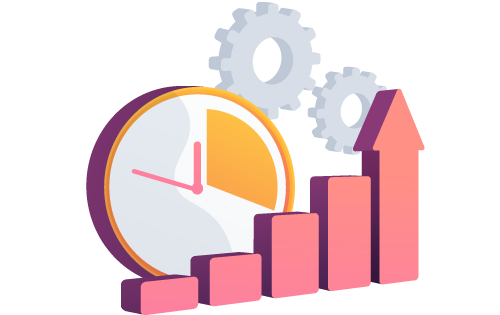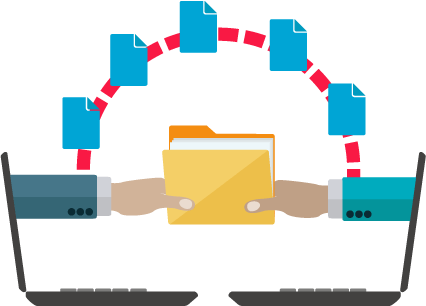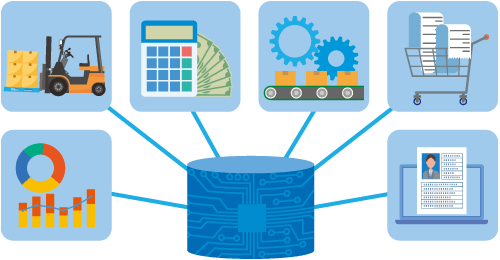Reducing Time-Consuming Tasks in Order and Inventory Management
Built For


Reducing Time-Consuming Tasks in Order and Inventory Management
In business today, efficiency isn’t just a goal—it’s a necessity. When it comes to order and inventory management, time-consuming tasks can quickly become bottlenecks that hinder productivity and profitability. From manually entering data to tracking inventory levels, these repetitive chores drain valuable time and increase errors that lead to costly mistakes.
In this article, we’ll explore various strategies and tools that can help you streamline your order and inventory management processes. By identifying and automating repetitive tasks, leveraging advanced software solutions, and implementing best practices, you can reduce both the time and effort required to manage your inventory and fulfill orders.
Identifying Time-Consuming Tasks
When it comes to order and inventory management, some tasks just seem to eat up your time. Here are a few of the biggest culprits:
Manual Data Entry and Record-Keeping
Manually entering data is not only tedious but also prone to mistakes. Every time you input a new order or update inventory levels, there’s a chance for errors. Plus, let’s face it—no one enjoys staring at spreadsheets all day.
Inventory Tracking and Stocktaking
Keeping track of inventory manually is like trying to juggle with one hand tied behind your back. It’s time-consuming, and there’s always a risk of missing something. Regular stocktakes can disrupt operations and require a lot of staffing.
Order Processing and Fulfillment
Each step in the order fulfillment process, from receiving orders to packing and shipping them, can be time-intensive. Coordinating these tasks, especially when done manually, can slow down your entire operation.
Managing Supplier Relationships and Purchase Orders
Keeping track of supplier information, negotiating terms, and managing purchase orders can be a headache. Without a streamlined process, it’s easy to get bogged down in emails and paperwork.
Handling Returns and Exchanges
Processing returns and exchanges are a necessary part of business, but it can be a real-time sink. Each return involves checking the item, updating inventory, and possibly handling refunds or replacements, which can slow down your workflow.
By identifying these time-consuming tasks, you can see where improvements can be made.
Reducing Time-Consuming Tasks by Automating Repetitive Processes

Imagine if you could make all those tedious, repetitive tasks disappear. Well, automation is the next best thing! Automating repetitive processes saves time, reduces errors, and frees up your team to focus on more critical tasks. Here’s how you can start automating your order and inventory management processes:
Benefits of Automation in Order and Inventory Management
Automation is like having an extra set of hands that never gets tired. It can handle the nitty-gritty details, allowing you to:
- Improve Efficiency: Eliminating repetitive tasks allows your team to focus on more strategic activities, boosting overall productivity.
- Save Time: Automated systems process data much faster than humans, so you can get things done more quickly.
- Reduce Errors: Automation minimizes the risk of human error, ensuring your data is accurate and up-to-date.
Reducing Time-Consuming Tasks with Inventory and Order Management Software
Numerous order and inventory management time-consuming tasks are perfect candidates for automation found in inventory and order management software:
Automated Inventory Updates
Instead of manually updating inventory levels every time a sale is made or a new shipment arrives, inventory and order management software does it for you in real time, providing an up-to-date view of your stock levels.
Automated Order Processing and Tracking
When an order occurs on the website, an online marketplace, or via the direct sales team, inventory and order management software centralizes all order information and handles everything from fulfillment to confirmation emails to tracking updates, providing a smooth and seamless experience for your customers.
Automated Purchase Order Creation and Management
It can be a hassle to keep track of when to reorder stock and generate purchase orders. Inventory software monitors inventory levels and creates alerts when levels fall below pre-determined thresholds. Purchase orders can be created with a click of a button, ensuring you never run out of essential items.
Reducing Time-Consuming Tasks with Barcode Technology
Adding barcoding technology to inventory and order management software is a smart move for any business looking to further streamline order and inventory management. It’s a simple yet effective way to improve accuracy, efficiency, and productivity.
- Improved Efficiency: Barcodes streamline tasks like receiving, picking, packing, and shipping. This leads to faster order fulfillment and happier customers.
- Enhanced Inventory Accuracy: Barcodes can help maintain accurate inventory records, reduce discrepancies, and prevent stockouts or overstock situations.
- Better Traceability: Barcodes make tracking items throughout your supply chain easy. This traceability is crucial for managing recalls, returns, and compliance with regulations.
- Cost Savings: Barcoding can help you save money in the long run by reducing errors and improving efficiency. Fewer mistakes mean less wasted time and resources.
Reducing Time-Consuming Tasks with EDI (Electronic Data Interchange)

Electronic Data Interchange (EDI) might sound technical, but it’s a game-changer for reducing manual tasks and streamlining communication in order and inventory management. By automating data exchange between business partners, EDI helps you reduce errors, save time, and improve overall efficiency. Here’s how you can leverage EDI to enhance your operations:
EDI and Its Role in Reducing Manual Tasks
EDI is a method for electronically exchanging business transactions and information, such as purchase orders, invoices, and shipping notices, between companies. Instead of manually entering data or sending paper documents, EDI enables automatic, standardized communication. Here’s why it’s beneficial:
- Automation: EDI automates the exchange of critical business information, reducing the need for manual data entry and paper-based processes.
- Accuracy: EDI significantly reduces the chances of errors caused by manual input, ensuring that data is consistent and accurate.
- Speed: EDI transactions are processed quickly, allowing for faster decision-making and response times.
How EDI Can Streamline Communication with Suppliers and Customers
Implementing EDI can revolutionize the way you interact with your suppliers and customers by:
- Seamless Integration: EDI integrates with your inventory and order management software, ensuring data flows smoothly across your supply chain.
- Real-Time Updates: With EDI, you receive real-time updates on orders, shipments, and inventory levels. This transparency helps you make informed decisions quickly.
- Consistency: EDI standardizes the format of the documents exchanged, reducing misunderstandings and ensuring everyone is on the same page.
Benefits of Integrating EDI with Your Inventory Management System
Integrating EDI with your inventory management system can offer several key advantages:
- Efficient Order Processing: EDI automates order processing, from receiving purchase orders to sending invoices. This reduces the time and effort required to manage orders manually.
- Improved Supplier Relationships: EDI allows you to communicate more effectively with your suppliers, leading to better coordination, fewer delays, and stronger partnerships.
- Enhanced Customer Satisfaction: Faster, more accurate order processing means you can fulfill customer orders more efficiently and achieve higher customer satisfaction and repeat business.
- Cost Savings: EDI can help you save money on labor, paper, and postage costs by automating manual tasks and reducing errors.
Reducing Time-Consuming Tasks with a Centralized Data System

Having a single source of truth for all your data can make a difference in order and inventory management. Centralizing data management means consolidating information from various sources into one cohesive system, making it easier to access, manage, and utilize. Here’s why centralizing your data is crucial and how it can transform your business operations:
Importance of Having a Centralized Data System
A centralized data system brings all your critical information into one place, offering several key benefits:
- Accessibility: With centralized data, everyone in your organization can access the information they need from a single system. This improves collaboration and ensures that all departments are on the same page.
- Consistency: Centralized data management ensures that all your information is consistent and up-to-date, reducing the risk of discrepancies and errors.
- Efficiency: Managing data from one central location is much more efficient than juggling multiple systems. It streamlines processes and saves time, allowing your team to focus on more strategic tasks.
How Centralized Data Management Improves Efficiency
Centralizing your data can significantly enhance the efficiency of your order and inventory management processes:
- Streamlined Workflows: With all your data in one place, you can streamline workflows, from order processing to inventory tracking. This reduces the time spent switching between systems and eliminates redundant tasks.
- Real-Time Insights: Centralized data management provides real-time visibility into your operations, monitoring performance, identifying trends, and optimizing your processes.
- Improved Decision-Making: A comprehensive view of your data allows for better decision-making. You can analyze the big picture, identify areas for growth, and implement changes that drive improvement and efficiency.
How Centralized Data Can Reduce Time-Consuming Tasks
Here are some practical examples of how centralizing data can help reduce time-consuming tasks in order and inventory management:
- Inventory Tracking: Instead of manually updating inventory levels across multiple systems, centralized data management allows for real-time updates. This ensures accurate stock levels and reduces the time spent on manual adjustments.
- Order Processing: Centralized data makes tracking orders from start to finish easier. You can see order statuses, shipping details, and customer information in one place, speeding up the fulfillment process.
- Reporting and Analytics: A centralized system makes generating reports and analyzing data much simpler. You can quickly pull comprehensive reports that provide valuable insights into your operations without requiring manual data compilation.
Call us at 817-870-1311




